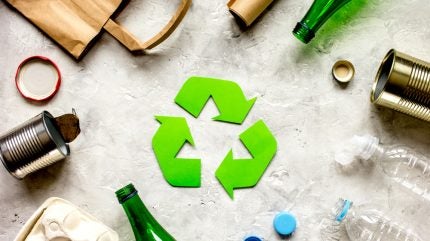
In recent years, the global consciousness towards environmental sustainability has seen a significant surge. Among various industries, the packaging sector has been under scrutiny due to its contribution to pollution and waste.
Fortunately, this awareness has spurred the development of innovative sustainable packaging solutions.
From biodegradable materials to creative design approaches, the quest for eco-friendly packaging is ever evolving. In this article, we delve into the top 10 must-have sustainable packaging solutions that are shaping a greener future.
1. Biodegradable plastics: pioneering the shift
Conventional plastics have long been the bane of environmentalists, clogging landfills and oceans for centuries. However, the advent of biodegradable plastics offers a promising alternative.
Derived from renewable sources such as corn starch or sugarcane, these plastics break down naturally, reducing their environmental impact significantly.
Brands worldwide are increasingly adopting biodegradable plastics for packaging, championing a sustainable paradigm shift.

US Tariffs are shifting - will you react or anticipate?
Don’t let policy changes catch you off guard. Stay proactive with real-time data and expert analysis.
By GlobalData2. Recycled materials: closing the loop
Recycling is not merely a buzzword; it’s a tangible solution to combat packaging waste. By utilising recycled materials such as paper, cardboard, glass, and aluminium, brands can drastically reduce their carbon footprint.
Moreover, the circular economy model encourages the reutilisation of materials, closing the loop of production and consumption.
From cardboard boxes to glass jars, recycled packaging materials offer a sustainable alternative without compromising quality or aesthetics.
3. Innovative design: maximising efficiency
In the pursuit of sustainability, innovative design plays a pivotal role. Packaging solutions that maximise efficiency while minimising material usage are gaining traction.
For instance, collapsible boxes and nested packaging designs reduce storage space and transportation costs, thereby lowering carbon emissions.
Additionally, lightweight materials and minimalist designs not only reduce environmental impact but also enhance the consumer experience.
4. Plant-based packaging: harnessing nature’s bounty
Nature offers a plethora of materials that are both renewable and biodegradable.
Plant-based packaging harnesses the power of natural fibres such as bamboo, hemp, and palm leaves to create eco-friendly alternatives to traditional packaging.
These materials not only decompose naturally but also require fewer resources to cultivate, making them a sustainable choice for conscientious consumers and businesses alike.
5. Compostable packaging: returning to the earth
Compostable packaging represents a holistic approach to sustainability, as it not only breaks down naturally but also enriches the soil.
Made from organic materials like cornstarch, sugarcane bagasse, or mushroom mycelium, compostable packaging is designed to decompose into nutrient-rich compost within a specified timeframe.
This closed-loop system aligns with nature’s cycles, offering a truly eco-friendly solution to packaging waste.
6. Reusable packaging: embracing circular consumption
In the age of single-use disposables, reusable packaging stands out as a beacon of sustainability.
From refillable glass bottles to durable tote bags, reusable packaging encourages consumers to minimise waste by opting for products with extended lifespans.
Moreover, innovative initiatives like zero-waste stores and product refill stations promote a circular consumption model, where packaging is not merely discarded but reused time and again.
7. Water-soluble packaging: dissolving harmful practices
Water-soluble packaging presents a revolutionary solution to the scourge of plastic pollution.
Made from materials such as PVA (polyvinyl alcohol) or seaweed extract, these innovative packages dissolve in water, leaving behind no harmful residues.
Ideal for single-use applications like detergent pods or food wrappers, water-soluble packaging offers convenience without compromising the environment.
8. Edible packaging: from waste to taste
Imagine a world where packaging not only protects the product but also tantalises the taste buds. Edible packaging, made from edible materials like seaweed, starches, or fruit skins, is turning this vision into reality.
Whether it’s edible wrappers for sweets or biodegradable cutlery, edible packaging reduces waste while offering a novel culinary experience.
9. Mushroom packaging: fungi as friends
Mushrooms are not just a delicious addition to meals but also a sustainable packaging solution.
Mushroom packaging, also known as mycelium packaging, utilises the root structure of fungi to bind agricultural by-products into biodegradable materials.
These organic packaging materials are not only compostable but also lightweight and durable, making them an eco-friendly alternative to traditional packaging.
10. Hemp-based packaging: a versatile wonder
Hemp, often hailed as a miracle crop, is gaining traction as a sustainable packaging material.
With its rapid growth cycle and minimal need for pesticides or fertilisers, hemp offers a renewable source of fibres for packaging production.
Hemp-based packaging is not only biodegradable but also boasts superior strength and moisture resistance, making it ideal for various applications, from paperboard to plastic alternatives.
The shift towards sustainable packaging solutions is essential for mitigating environmental degradation and promoting a circular economy.
By embracing biodegradable materials, recycling initiatives, and innovative design approaches, businesses can pave the way for a greener future.
From biodegradable plastics to hemp-based packaging, the possibilities are endless when it comes to sustainable packaging solutions. It’s time to rethink packaging and embrace eco-friendly alternatives that benefit both the planet and future generations.



